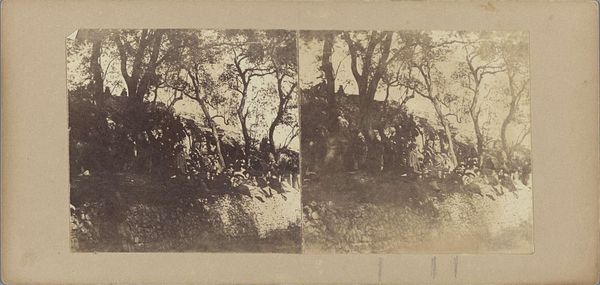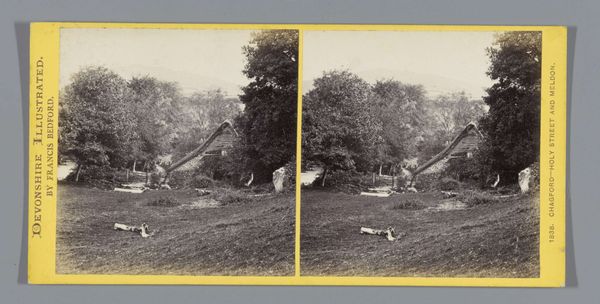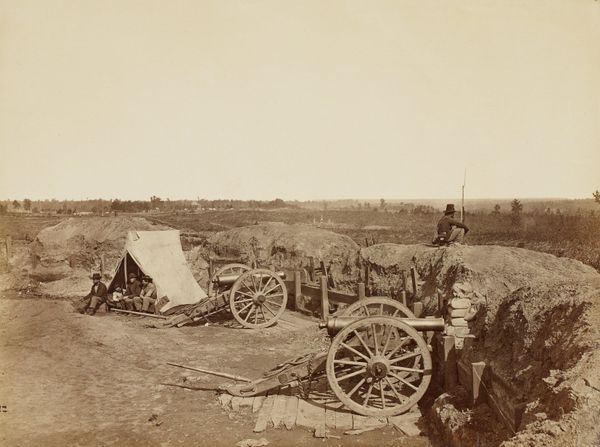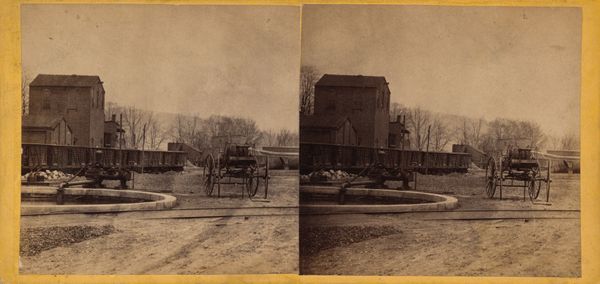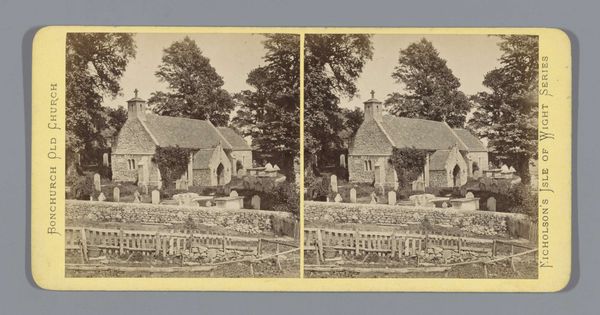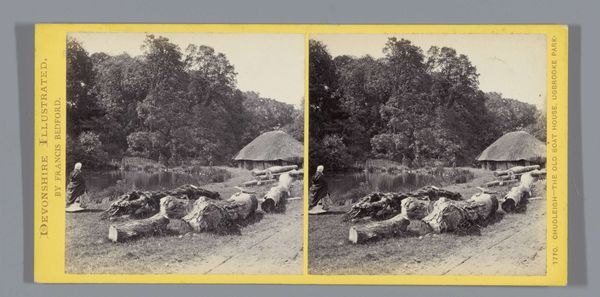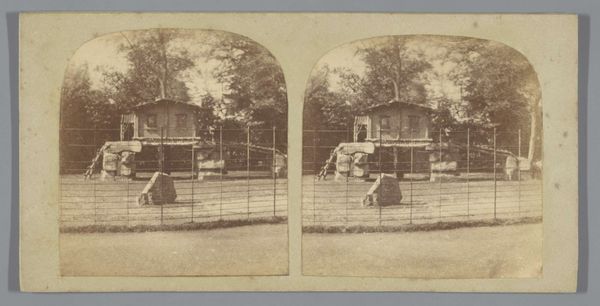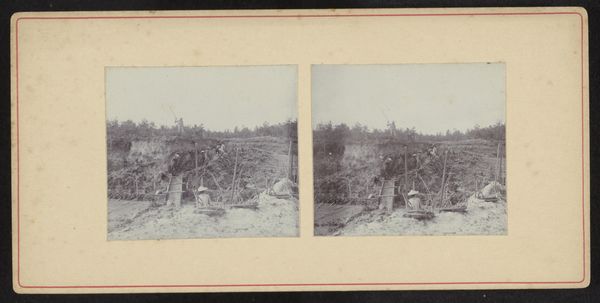
Dimensions: height 85 mm, width 170 mm
Copyright: Rijks Museum: Open Domain
Curator: This is a gelatin-silver print by Francis Bedford, titled "Gezicht op Holy Street nabij Chagford," created sometime between 1850 and 1880. What's your immediate take? Editor: Well, first off, it strikes me as incredibly tactile. You can almost smell the damp earth and worn wood of the wagon. Look how central that wagon is to the composition! I am drawn to the evidence of hard work depicted in it. Curator: That central image holds multiple layers. A dilapidated wooden structure with a cart tells a tale. This photograph speaks volumes about the changing social landscapes and the inherent symbolism found in everyday life. Editor: Exactly! Bedford, likely using a process demanding considerable time and labor, elevates what could be mundane – a cart, a hut, some chap at a fence – to something… poignant. One ponders about the working class at the time... it shows that their working practices did in fact reflect in photography itself as a technique of documentation. Curator: I agree, there's a certain melancholic Romanticism. Notice the pictorialist aesthetic softening the focus? It is a beautiful countryside scene tinged with transience, where traditional symbols of home and work begin to fade in this cultural landscape. This romantic symbolism is amplified with the soft focus, to better convey a longing for past simplicity... or at least the *image* of such a thing. Editor: And the choice of gelatin silver gives it this luminosity, almost defying its subject matter, but I get the cultural reading... a collective memory reified through meticulous material manipulation. One may be reminded that the gelatin for such a photo consists in an actual living animal. An actual being put through work of extracting collagen that gives this photograph its beautiful definition of space, a symbol of home or not. Curator: Interesting to consider. Well, this particular photograph does certainly encapsulate that spirit of yearning—not merely through its subject matter, but through the deliberate crafting of a sentimental image with material, composition, light, and exposure to convey particular cultural, as well as spiritual meanings. Editor: Indeed! Food for thought how much labor and material history there can be in this deceptively 'simple' landscape view, right?
Comments
No comments
Be the first to comment and join the conversation on the ultimate creative platform.

